[su_row][su_column size=”2/3″ center=”no” class=””]
Most interesting landmarks of Aquitaine
Below are listed the most amazing natural and man made landmarks of Aquitaine.
Natural landmarks of Aquitaine
Caves
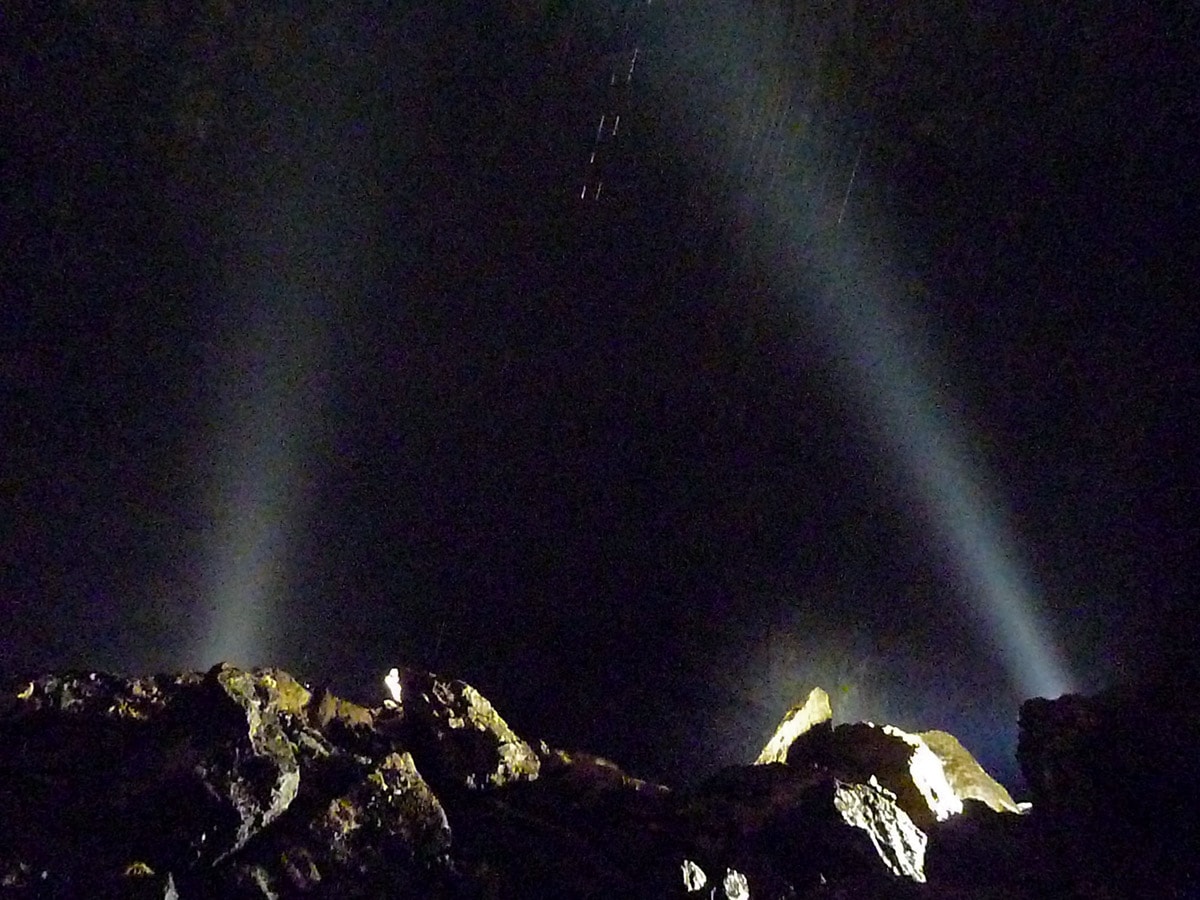
- Arresteliako ziloa (Souffleur de Larrandaburu) – Pyrénées-Atlantiques. Partly located in Spain, Navarra. 835 m deep cave, length of explored cave passages – 60,943 m.
- Gouffre d’ Aphanicé – Pyrénées-Atlantiques. Abyss with 328 m deep pitch inside it. Total depth of cave – 504 m.
- Gouffre de la Pierre Saint Martin – Gouffre des Partages – Aquitaine. Part of the cave is located also in Spain. Very long cave system, length of explored passages – 80,200 m. Up to 1,408 m deep (the 17th in the world). 7 entrances in French side, 4 – in Spanish side. One of the entrances starts with very impressive 320 m deep abyss. Contains enormous underground voids, including Salle de la Verna (the 10th largest in the world) and Salle de l’Eclipse (the 12th largest in the world). In the Wind tunnel there is constant wind with a speed 11 m/s.
- Gouffre de Proumeyssac – Dordogne. Beautiful show cave with speleothems.
- Gouffre du Bracas de Thurugne (Reseau de Soudet) – Pyrénées-Atlantiques. 1,170 m deep cave system, length of explored passages – 10,340 m.
Other natural landmarks
- The Great Dune of Pyla – Gironde. Beautiful nature monument – the tallest sand dune in Europe. It is up to 107 m high and represents a massif which is 500 m wide and 3 km long.
Man made landmarks of Aquitaine
Petroglyphs and rock art
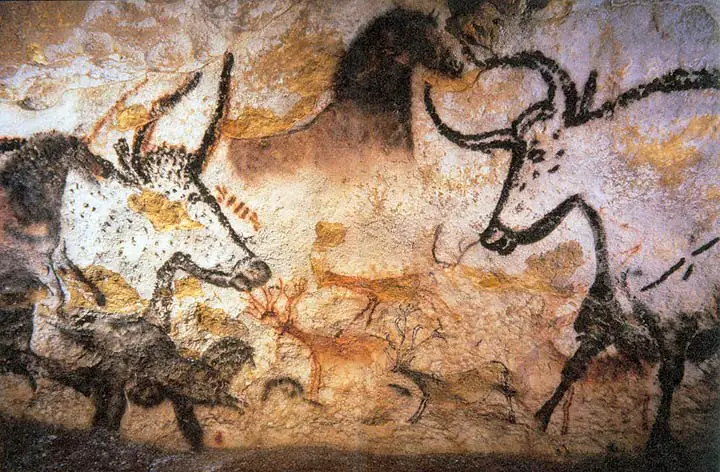
- Abri de Cap Blanc – Dordogne. Grotto – shelter with cave art from Magdalenian period, 15,000 BC. Paintings of animals are arranged in a frieze and are done in very high quality. Rock art here adorned the living space of humans.
- Abri du Poisson – Dordogne. Short, 8 m deep grotto with prehistoric paintings. Among other works of art it is adorned with beautiful, 1.05 m long carving of fish, made as early as 25,000 BC.
- Grotte de Bara-Bahau – Dordogne. 90 m long cave with prehistoric engravings. 26 engravings are located on a single panel and show animals and symbols. Made in early Magdalenian period.
- Grotte de Bernifal – Dordogne. Cave – ancient settlement of Magdalenian people. Inhabited 15,000 – 10,000 years ago. Walls adorned with 110 paintings and engravings of animals and symbols.
- Grotte de Cussac – Dordogne. Cave with more than 150 Palaeolithic artworks, found also remains of at least five people. Burials made some 25,000 years ago.
- Grotte de Font-De-Gaume – Aquitaine. Cave with beautiful prehistoric paintings and engravings – in total 230 figures. Cave was inhabited since 25,000 BC. Paintings made around 17,000 BC. Beautiful frieze of five bison.
- Grotte de la Mairie – Dordogne. Cave with more than 40 paintings from Magdalenian period, 11,500 BP. Drawings mostly show animals.
- Grotte de la Mouthe – Dordogne. Grotto with cave art – more than 200 depictions of animals from Upper Palaeolithic.
- Grotte de Lascaux – Aquitaine. Group of caves with some of the best known Palaeolithic polychrome paintings in the world. Paintings made around 15,300 BC. Mostly drawn large animals.
- Grotte de Pair-non-Pair – Gironde. Small cave with some 30,000 years old drawings. Currently seen 10 drawings, earlier were visible more than 60. Shown pairs of mammoths, auroch, deer, horses, also other animals.
- Grotte de Rouffignac – Aquitaine. 8,000 m long cave system in chalk. Contains paintings and engravings of Magdalenian period, more than 13,000 years old. One of the largest painted caves in Europe, also one of the longest caves in sandstone worldwide. Electric train inside the caves.
- Grotte de Saint-Cirq (Grotte du Sorcier) – Dordogne. Cave with engravings from Solutrian and Magdalenian periods – in total 15 engravings of animals and abstract symbols. One of drawings shows also a sorcerer. Engravings created around 17,000 – 15,000 BC. This small cave has been used also as wine cellar over the last centuries.
- Grotte des Combarelles – Dordogne. 237 m long cave with more than 400 prehistoric paintings of animals. Upper Palaeolithic settlement.
- Grottes d’Isturitz et d’Oxocelhaya – Pyrénées-Atlantiques. Two connected caves (600 m) which contain important archaeological heritage. Shelters were inhabited 80,000 – 10,000 BC, there are also artifacts from Medieval times. 80,000 years ago here were living also Neanderthals. Found flutes which are 35,000 – 10,000 years old. Walls of caves are adorned with prehistoric wall paintings and engravings.
Other archaeological monuments
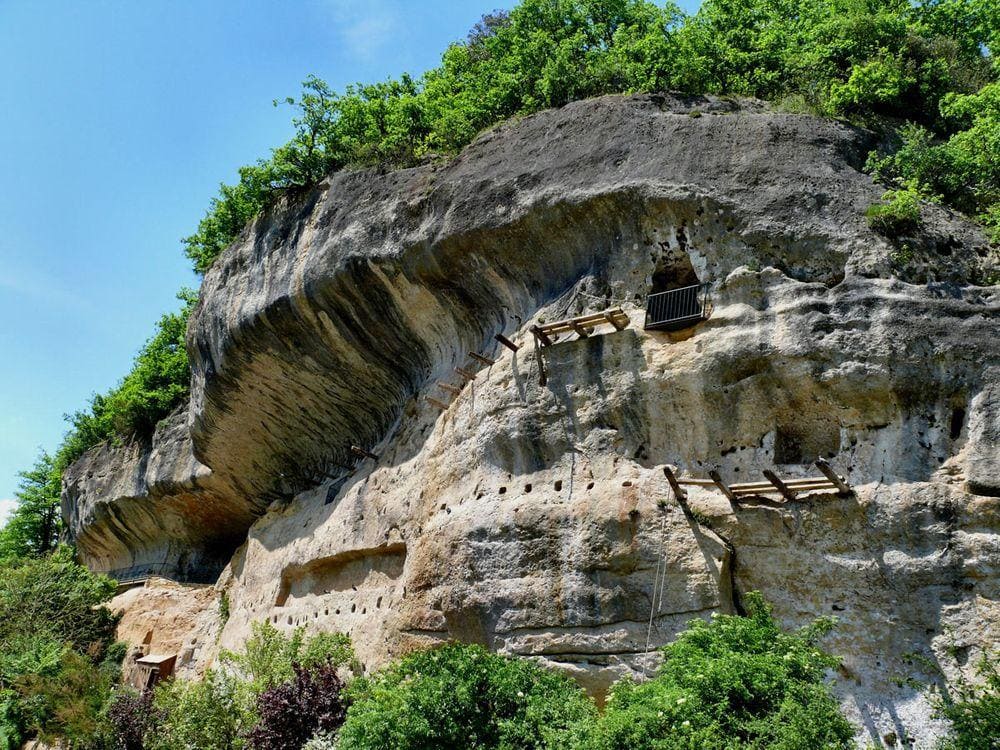
- Abri de la Madeleine and Petit Marzac – Dordogne. Rock shelter, which has provided scientifically very important and exciting finds. This cave has given a name to Magdalenian culture. Here were found approximately 20,000 years old carvings from ivory. In Medieval times here was built a church, partly inside the cave, as well as a castle.
- Cro-Magnon – Dordogne. Cave with remnants of prehistoric people from Upper Palaeolithic, discovered in 1868. This discovery had huge importance on the development of prehistoric archaeology.
- La Ferrassie – Dordogne. Prehistoric site – a grotto with shelter. Cultural layer is more than 10 m thick and contains artifacts of Middle Paleolithic (Mousterian) and later ages. Found burials of 7 Neanderthals. Cliff blocks with engravings.
- La Micoque – Dordogne. Site of prehistoric settlement at the river with 6 distinct archaeological layers. Found very archaic stone tools of late Acheulian period. Inhabited around 470,000 – 350,000 years ago.
- Laugerie Haute – Dordogne. Cliff shelter – ancient settlement, which was inhabited in 22,000 – 13,000 BC. Scientifically very important archaeological site – a settlement of Gravettian, Solutrian, Badegoulien and Magdalenian periods. Here were discovered interesting small statuettes.
- Le Moustier – Dordogne. Prehistoric cave settlement (two shelters) of great importance to science. Here were discovered stone tools which were made 56,000 – 40,000 years ago and gave a name to Mousterian culture. Discovered also skeleton of Neanderthal, who lived here 45,000 years ago.
- Pierrefitte menhir – Gironde. 5 m tall menhir. This stone weighs some 50 tons and was erected around 3000 – 2500 BC.
Urban planning monuments
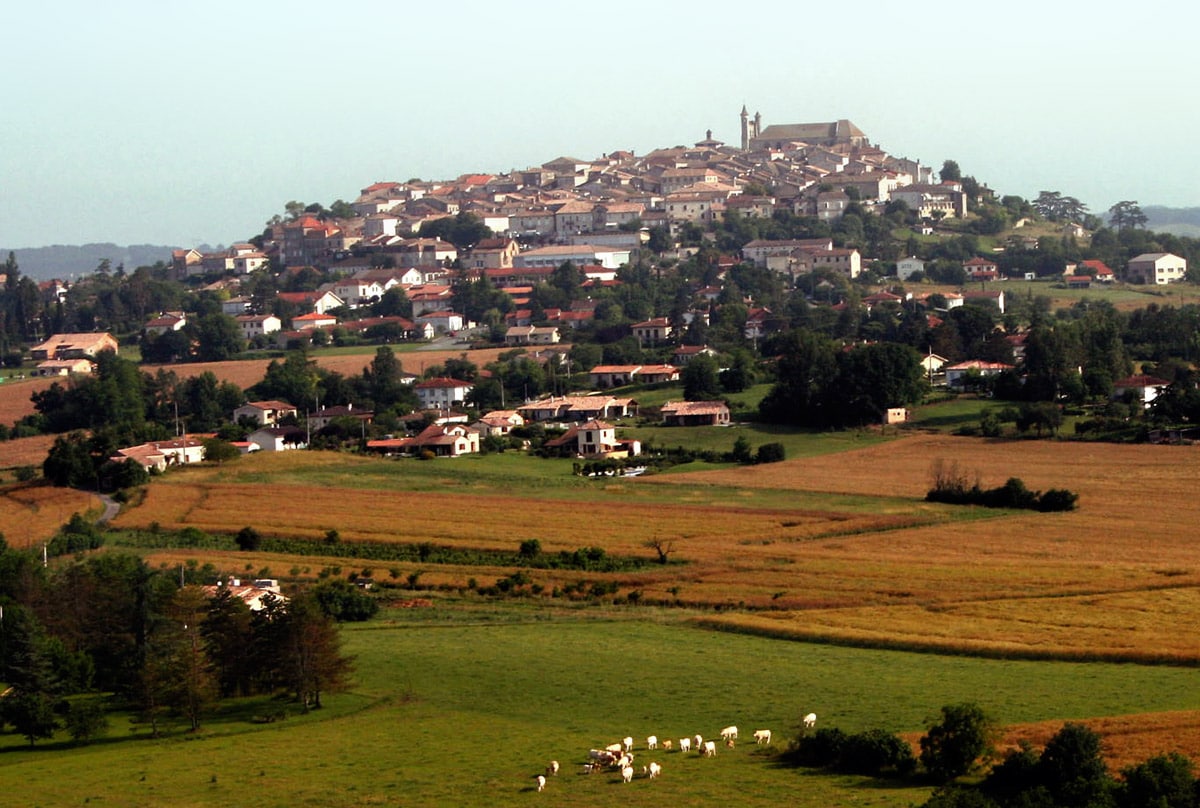
- Ainhoa – Pyrénées-Atlantiques. Historical Basque village with the characteristic architecture. Mostly built in the 17th – 18th century. Interesting headstones in the village cemetery.
- Domme – Dordogne. Fortified medieval town in picturesque location. In the fortress were imprisoned Knight Templars in 1307, who left numerous mysterious graffiti on the prison walls.
- Historic center of Bordeaux – Gironde. Exceptional monument of the 18th century architecture and city planning, one of the first examples of large scale city development projects in France.
- La Roque-Gageac – Dordogne. Medieval village, perched between a vertical cliff and Dordogne river. Part of structures are hewn into the cliff.
- Monflanquin – Lot-et-Garonne. Fortified medieval village with dense, compact urban network. Located on the top of a hill.
- Sarlat-la-Canéda medieval center – Dordogne. Very well preserved medieval center of historical city, which developed around a monastery.
Castles
- Château de Beynac – Dordogne. Very well preserved medieval castle on a cliff above Dordogne River. Built in the 12th century. Oldest part is a massive Romanesque keep. Valuable interiors. Picturesque town at the foot of mountain.
- Château de Biron – Dordogne. Large, well preserved medieval castle. Castle built mainly in the 12th century, extended in the 16th century.
- Château de Bonaguil – Lot-et-Garonne. Enormous castle in ruins. Built in the 13th century, rebuilt in the 15th – 16th centuries. Masterpiece of military architecture, never attacked.
- Château de Castelnaud-la-Chapelle – Dordogne. Massive medieval fortress – castle, built in the 13th century and later.
- Château de Commarque – Dordogne. Ruins of enormous medieval castle on rocky outcrop. Initially – in the 12th century – built as a wooden castle, extended in the time period up to the 14th century.
- Château de Fayrac – Dordogne. Well preserved medieval castle, built in the 15th – 19th century.
- Château de la Brède – Gironde. Gothic castle, built in the 14th century. Romantic water castle. Montesquieu lived here and created most of his works.
- Château de la Grande Filolie – Dordogne. Picturesque castle, built in the 14th – 16th century.
- Château de Pau – Pyrénées-Atlantiques. Medieval castle, rebuilt in Renaissance style. Very ornate interiors. Now it houses museum with important art collections.
- Château de Puymartin – Dordogne. Large, well preserved castle – palace from the 13th – 19th century. Ghost stories.
- Château de Roquetaillade – Gironde. Well preserved medieval castle. Built in 1306. Castle has got very ornate interiors. The same family owns the castle for more than 700 years.
- Château de Villandraut – Gironde. Impressive castle ruins. Castle was built in 1305 – 1312. It had very ornate interior.
- Maison forte de Reignac – Dordogne. The best preserved troglodytic castle in France – a castle partly built into the cliff.
Palaces
- Château de Hautefort – Dordogne. A Renaissance palace, reconstructed in the 17th century. Beautiful French gardens.
- Château de Losse – Dordogne. Interesting Renaissance palace, built in the 16th – 18th century. Fortified, with historical furniture.
- Château of Antoine d’Abbadie – Pyrénées-Atlantiques. Interesting Neo-Gothic palace, built in 1864 – 1879.
Romanesque churches and monasteries
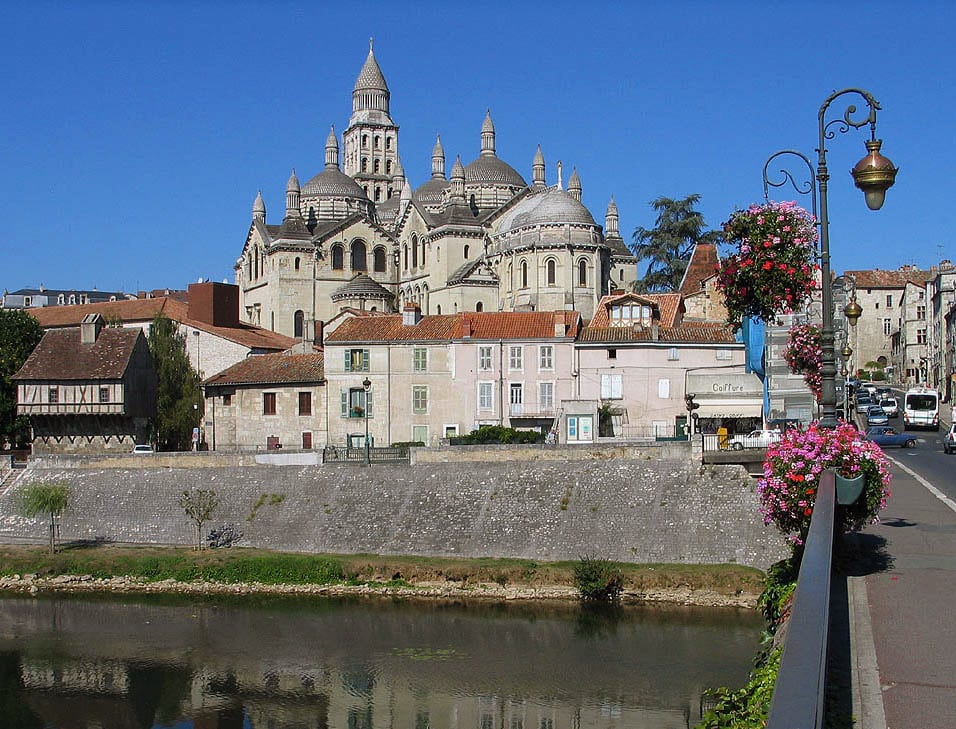
- The church in the Abbey of Sorde-l’Abbaye – Landes. Ancient abbey, founded in 960. The Romanesque church is very old as well – the tower is built in the 10th century, church itself – mainly in the 12th century. Valuable sculptures and mosaics.
- The church in the Abbey of Saint-Sever – Landes. This abbey was an important arts center in the 11th century. The large Romanesque church is built in the 11th century and has preserved polychrome capitels, adorned with lions.
- Cadouin Abbey and church – Dordogne. A monastery, founded in 1115. The massive Romanesque church was consecrated in 1154. Beautiful cloister with richly carved capitels. Abbey owned a relic – a purported shroud of Christ and thus it was a place of pilgrimage. This shroud is very old and has historical importance but certainly is not a shroud of Christ.
- Oloron St. Mary Cathedral – Pyrénées-Atlantiques. Large and interesting Romanesque cathedral. Construction started in 1102, completed (by adding Gothic details) in the 14th century. Interesting Romanesque stone carvings.
- Périgueux St. Front Cathedral – Dordogne. Massive Romanesque – Byzantine cathedral, built after 1120 and rebuilt in the 19th century. Church has five domes.
- Saint Front Périgueux Cathedral – Dordogne. Largest church in the south-western part of France. Constructed in the 12th century in Romanesque and Byzantine styles. A planning of the church is typical for Byzantine churches what is very unusual in France.
- Saint-Emilion monolithic church – Gironde. Rock-cut church, made in the 11th century. The hall is surprisingly large.
Gothic churches
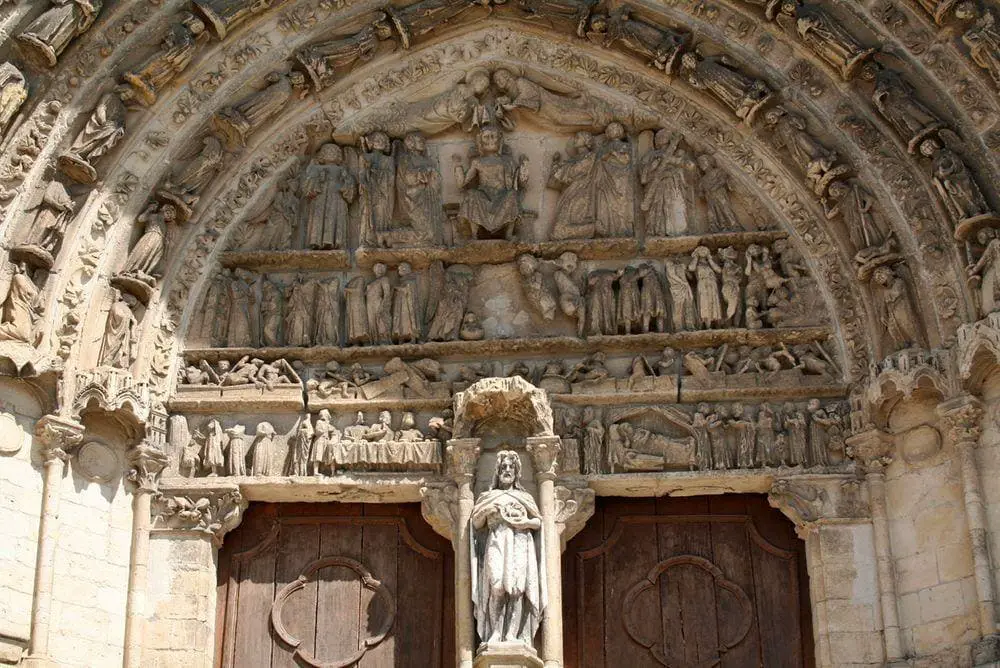
- Bayonne Cathedral – Pyrénées-Atlantiques. Large Gothic cathedral. Construction begun in the 13th century, completed by the 17th century. The original church has been considerably rebuilt.
- Bazas Cathedral – Gironde. Beautiful Gothic cathedral, designed after the great cathedrals of the Northern France and built in the 13th – 14th centuries. Especially valuable is the portal with numerous sculptures.
- Saint-Michel Basilica, Bordeaux – Gironde. Interesting Gothic church, built in the 14th – 16th century. The tower stands separately from the church – it is 114 m high. The church itself is large as well – 75 m long, with 23 m high nave.
Parks and gardens
- Eyrignac Manor gardens – Dordogne. Some of the most beautiful gardens in France, gradually developed and well tended since the 18th century.
- Jardins de Marqueyssac – Dordogne. Magnificent historical gardens with amazing topiaries.
Other man-made landmarks of Aquitaine
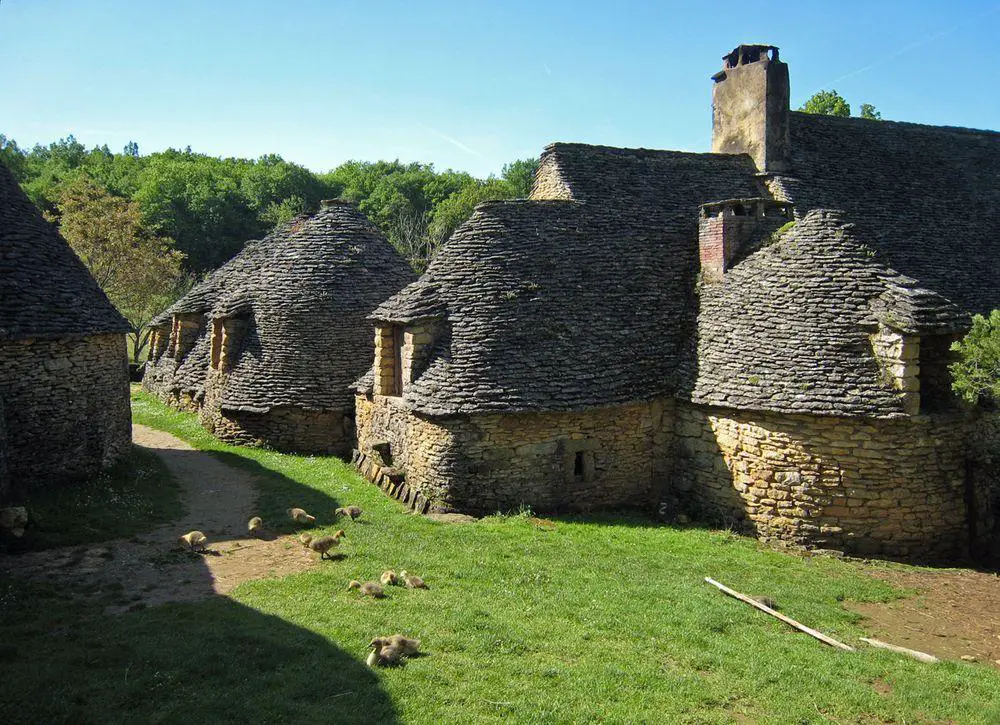
- Cabanes du Breuil – Dordogne. A group of interesting dry stone buildings used as agricultural summer houses. Built as early as in the medieval times.
- Cordouan lighthouse – Gironde. Very old, impressive lighthouse, built in 1584 – 1611. The structure is 67.5 m tall and has features of Renaissance architecture style, including a very rich ornamentation of interiors.
- Croix Cyclique d’Hendaye – Pyrénées-Atlantiques. A cross in the center of Hendaye town. It is adorned with mysterious alchemical symbols and has caused much interest among people willing to decipher it. Cross was made in the 17th century.
- Grand Théâtre de Bordeaux – Gironde. Large theater building with Neo-Classical facade, built in 1780.
- Musée Bonnat – Pyrénées-Atlantiques, Bayonne. One of the best art galleries in southern France with rich collections of Spanish painting and the 19th century French art.
[/su_column]
[su_column size=”1/3″ center=”no” class=””]
Described landmarks of Aquitaine
If you see this after your page is loaded completely, leafletJS files are missing.
Aquitaine is one of the richest administrative regions in France regarding the wealth of landmarks and attractions. Highlights of this region are:
- Prehistoric cave paintings and engravings. Here are located such masterpieces as the paintings in Lascaux, Font de Gaume and the enigmatic Grotte de Saint-Cirq.
- Pyrenean caves. Some of the largest caves in the world are located here.
- Castles. Region is very rich with medieval castles, often located in dramatic natural setting. Many castles have amazing history.
Featured: Pierre Saint-Martin Cave
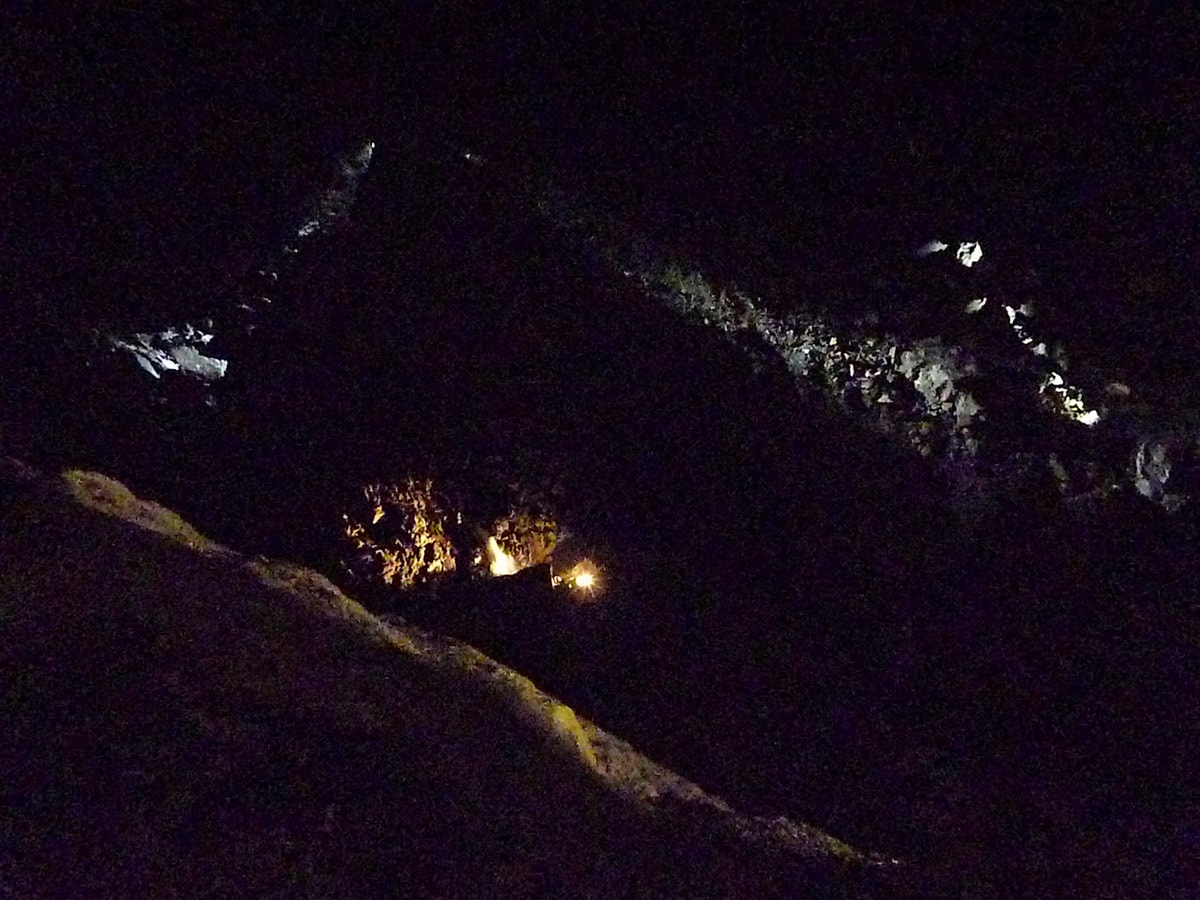
Pierre Saint-Martin Cave is one of the greatest caves in the world with enormous role in the history of speleology.
The length of the explored passages in Pierre Saint-Martin Cave is 80,200 m (the 25th in the world), known depth – up to 1,408 m (the 17th in the world). The deepest part of the cave are 71.5 m below the sea level.
Recommended books
Guide Vert Aquitaine [ Green Guide in FRENCH – Aquitaine ]
Southwest France (Passport’s regional guides of France)
This guide to southwest France includes an account of the region’s history, a section on food and drink, and a narrative tour of the region’s notable features – cities, villages, chateaux, churches, monuments and areas of outstanding natural beauty. It also gives practical information on accommodation and eating out.
[/su_column][/su_row]


